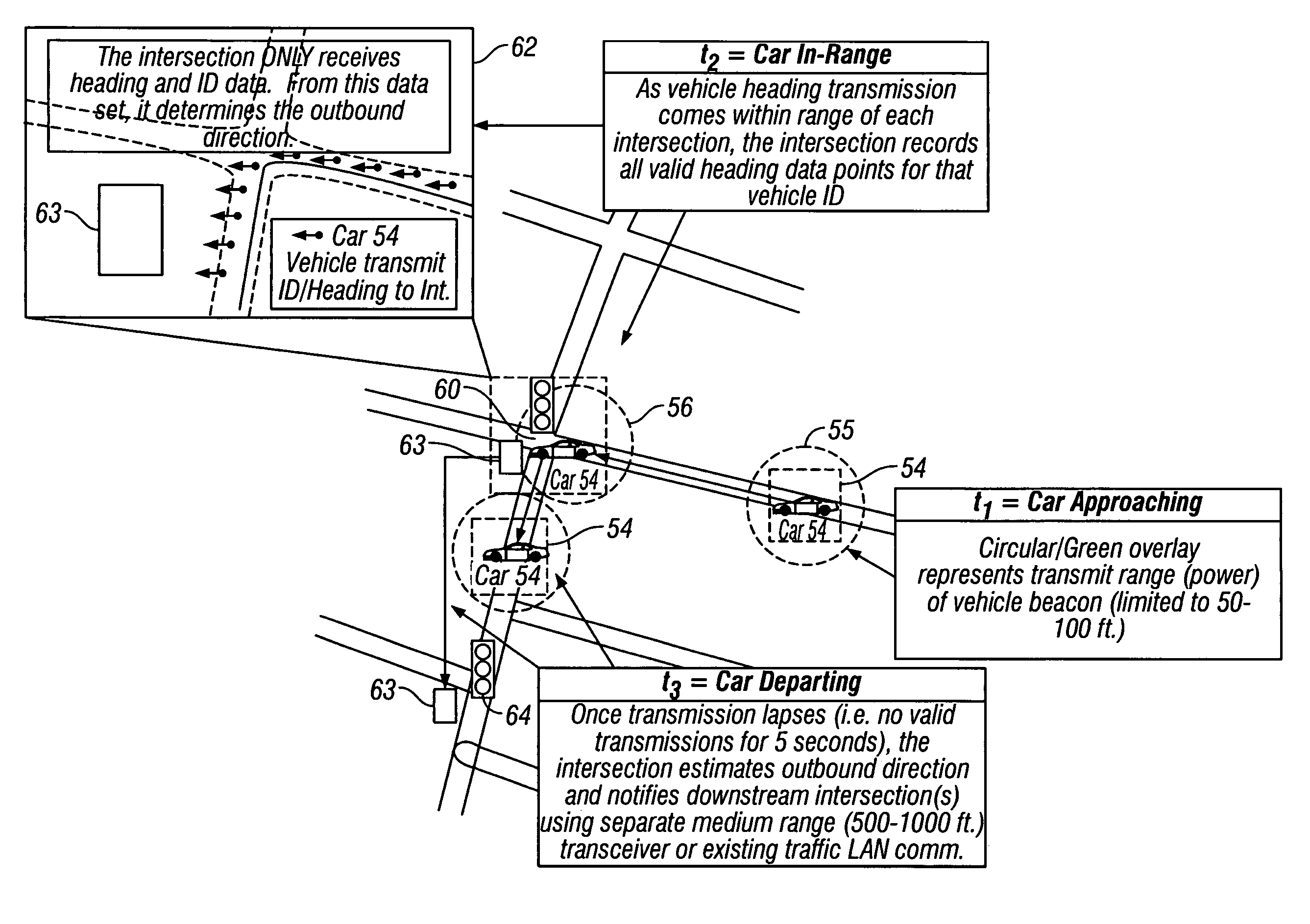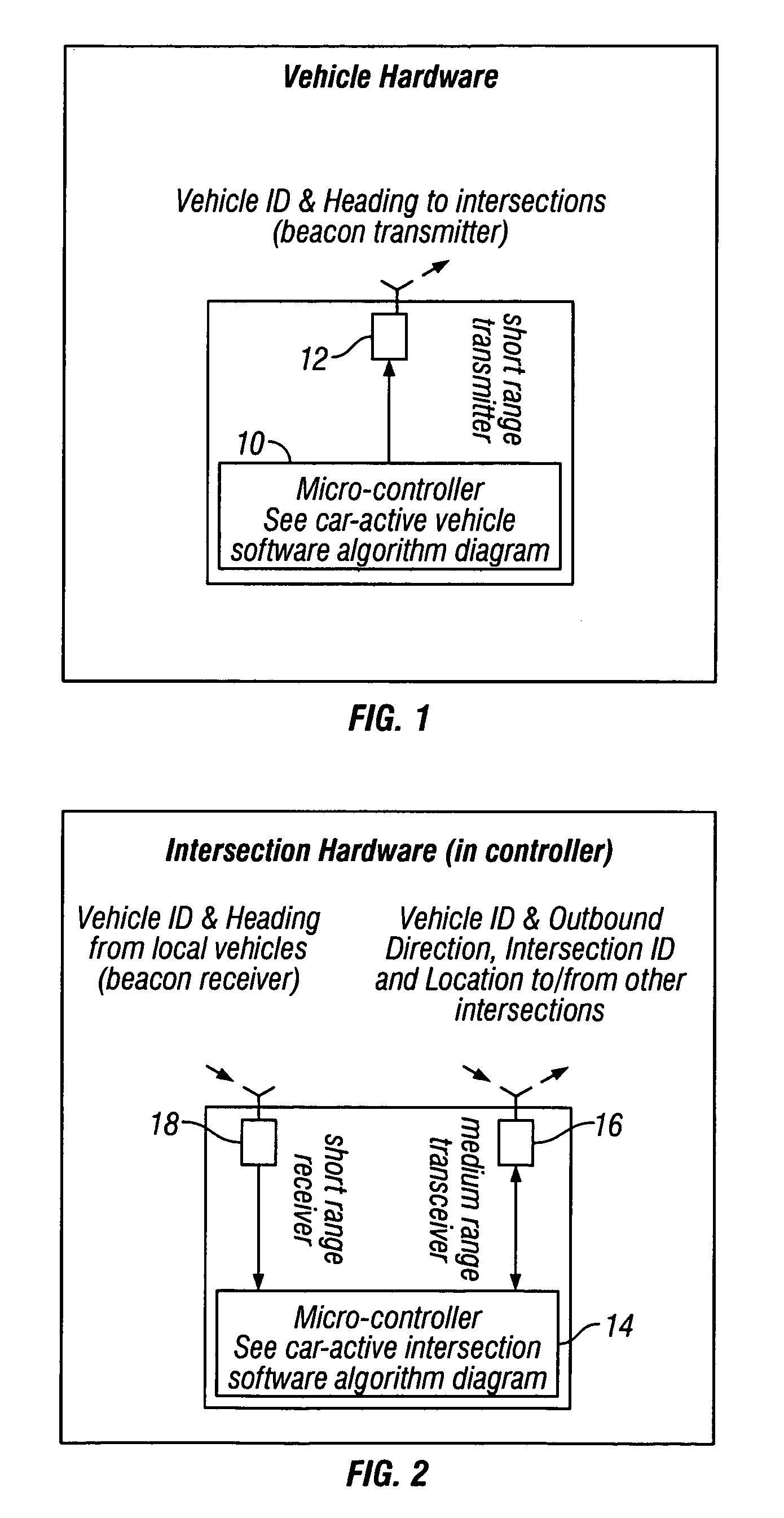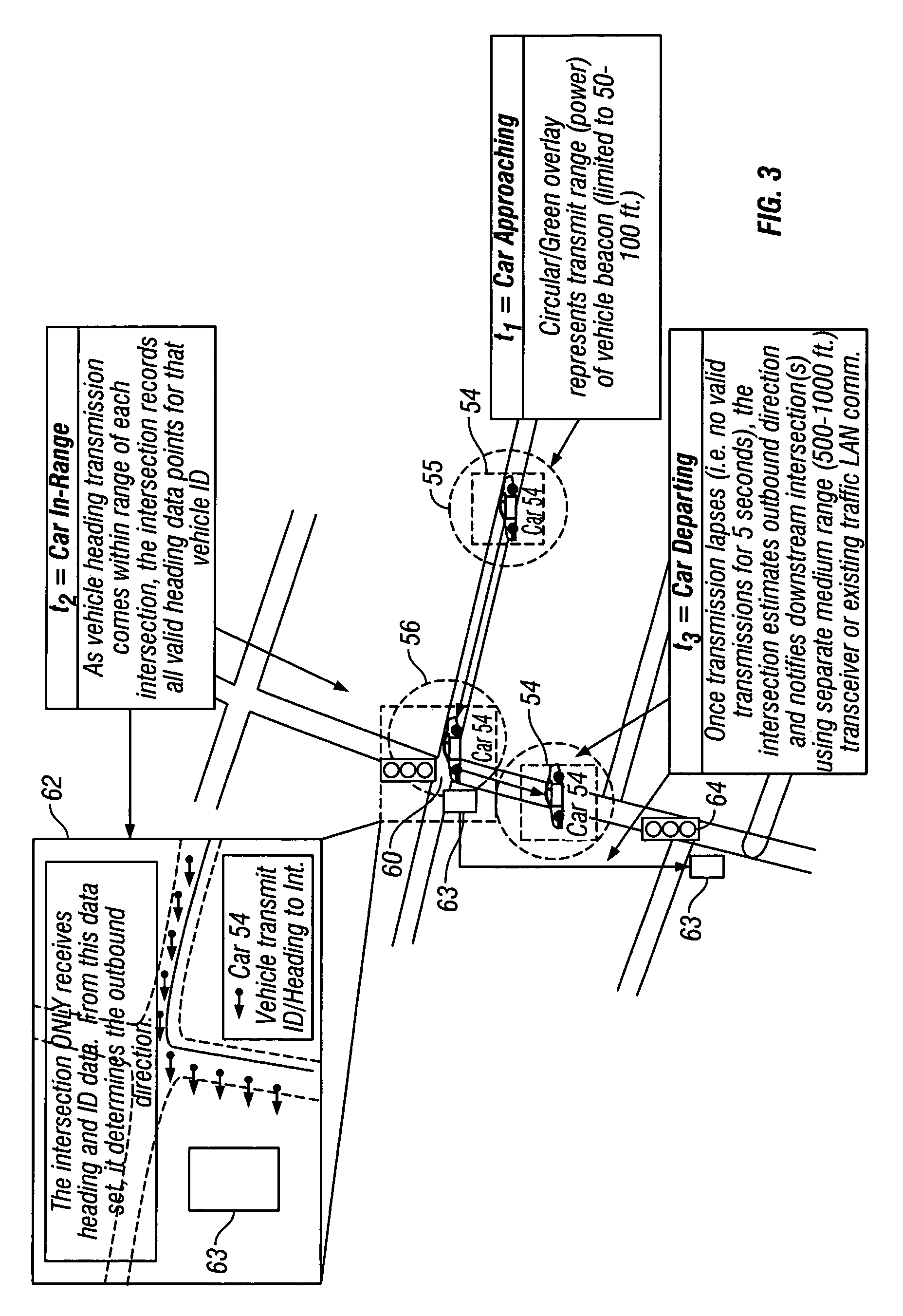Method and system for beacon/heading emergency vehicle intersection preemption
a technology for emergency vehicles and preemption systems, applied in road vehicles, traffic control, traffic signals, etc., can solve the problems of reducing the effectiveness of emergency vehicle sirens, limited motorists' awareness of the outside environment, and limited effect of loud emergency vehicle sirens and horns, so as to reduce the integration cost of an already cheap vehicle modul
- Summary
- Abstract
- Description
- Claims
- Application Information
AI Technical Summary
Benefits of technology
Problems solved by technology
Method used
Image
Examples
Embodiment Construction
[0039]The “car-active” embodiment for the emergency vehicle intersection preemption system is illustrated in FIGS. 1 through 6. Referring to FIG. 1, the “car-active” system has a micro-controller 10 on board an emergency vehicle and a short range, highly localized, low-power transmitter 12 for transmitting vehicle ID and heading to intersections the emergency vehicle is approaching. Micro-controller 10 uses a software algorithm which will be described in greater detail hereinafter. Beacon transmitter 12 continuously transmits ID and heading every second.
[0040]With reference to FIG. 2, each intersection will have a micro-controller 14, a medium-range transceiver 16, as well as a short-range receiver 18. Micro-controller 14 has a software algorithm that will be described in greater detail hereinafter. Medium-range transceiver 16 transmits vehicle ID and outbound direction, intersection ID, and location to and from other intersections. Short-range receiver 18 receives vehicle ID and he...
PUM
 Login to View More
Login to View More Abstract
Description
Claims
Application Information
 Login to View More
Login to View More - R&D
- Intellectual Property
- Life Sciences
- Materials
- Tech Scout
- Unparalleled Data Quality
- Higher Quality Content
- 60% Fewer Hallucinations
Browse by: Latest US Patents, China's latest patents, Technical Efficacy Thesaurus, Application Domain, Technology Topic, Popular Technical Reports.
© 2025 PatSnap. All rights reserved.Legal|Privacy policy|Modern Slavery Act Transparency Statement|Sitemap|About US| Contact US: help@patsnap.com



